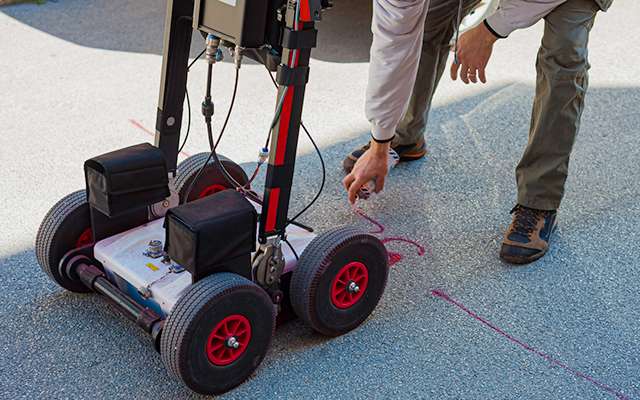Ground-penetrating radar (GPR) is a form of concrete scanning that is used during construction to identify utility lines or structures underground prior to excavation, drilling, or cutting below or through grade. While GPR technology has been around for quite a while, there are still quite a few misconceptions regarding how it works as well as the limitations of the technology. Below, we’re discussing what concrete scanning is, what GPR is, as well as the top two myths about its use and functionality.
What is Concrete Scanning?
Generally speaking, concrete scanning refers to any scanning method used for determining what lies beneath or within concrete.
What is Ground-Penetrating Radar?
Ground-penetrating radar is the technology used for concrete scanning. A technician only needs access to one side of a concrete slab to perform a GPR scan, making it possible to scan foundational slabs or areas where it’s difficult to access both sides of the concrete.
GPR Myths
As mentioned above, there are some myths about how GPR works and how effective it is. Below are the three most common myths we hear as GPR professionals.
1) Anyone Can Do It – many people believe that concrete scanning utilizing GPR is easy enough for untrained individuals to carry out, but this couldn’t be further from the truth. Interpreting and understanding GPR data requires a well-trained professional with experience to properly mark anomalies, keeping the job and workers safe when excavating, drilling, or cutting.
2) Doesn’t Work with Water – some property owners believe that GPR doesn’t work if there is a water obstruction or if the top of the concrete is wet. In fact, GPR works very well even through freshwater, snow, or ice, and an accurate picture can still be taken through wet concrete. The only real limitation is saltwater, as the salt will interrupt the electromagnetic waves emitted by the GPR scanner.
Ground-penetrating radars have been around since the early 1920s and used commercially since the early 1970s. They are well understood by experts and professionals. If you’re looking to have the concrete at your building scanned prior to cutting or drilling, contact one of our highly-trained GPR professionals to scan, interpret, and provide an accurate report of the location of rebar, air pockets, utility lines, and more that may be within your concrete.

